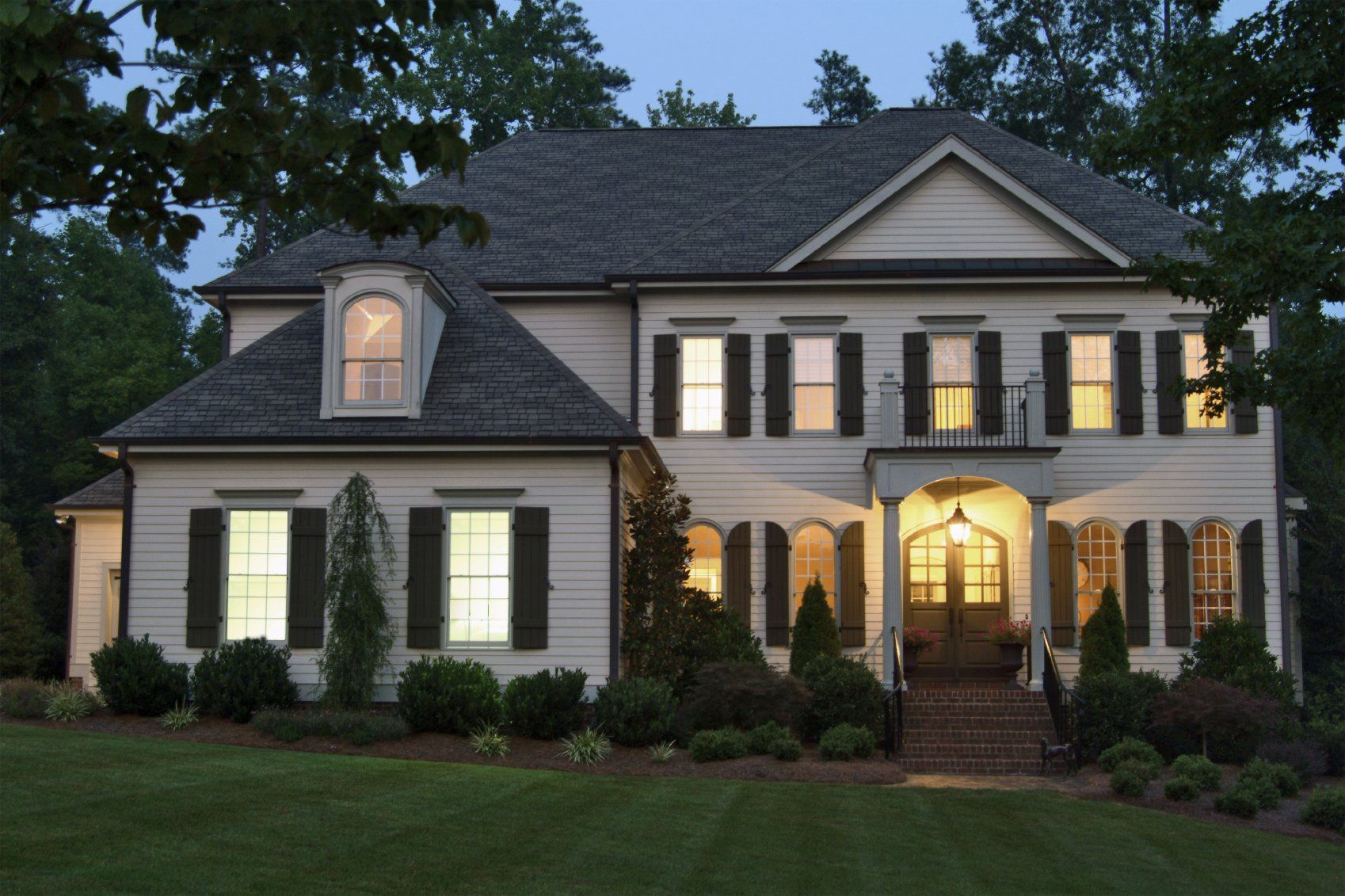Planning to Sell Your Home? Here’s How to Protect and Increase Home Value on a Budget
1) Declutter to increase home value
It happens to all of us – the storage closet that was once empty, is now overflowing; and belongings that should be stored away have found new homes elsewhere. If this sounds familiar, now is a great time to begin eliminating things you no longer need.
Decluttering is one of the most inexpensive ways to increase home value. Pay particular attention to your kitchen and bathrooms, as well as your living room, as these are most often a home’s best selling points. Tackle this project room-by-room, and don’t move on until the room is finished so you can avoid creating an endless pile of stuff. You can begin by categorizing your items using three different piles. One for belongings you’d like to keep, one for “maybe’s,” and one for donation items. In a few days, come back to the “maybe” pile and make the final cuts.
Follow these tips as you begin decluttering:
- Prioritize organizing your bathroom. Start with your countertops and work your way to your linen closet and medicine cabinets. Try to remove personal items like your toothbrush, hairbrush, and mouthwash so buyers can imagine their own space.
- Tidy up your home office. be sure to file away or shred old papers, clear off your desk, and hide any unsightly cords using zip ties or cords.
- Throw out any expired items throughout your home. This includes items in the kitchen, pantry, bathroom, and medicine cabinet.
- Sort through your closet and remove extra hangers, and donate or toss out clothes or shoes you no longer need. This will help your closet space appear more spacious and organized.
- Remember, your entryway sets the first impression. Be sure to declutter it of personal items and create an entrance that draws buyers in.
- Clear your kitchen countertops. Avoid using this space for random objects, and try to hide all countertop appliances, such as your blender, toaster, and crockpot.
- Depersonalize your home. Remove items that are too personal, like family photos. It will help if potential buyers imagine themselves in the space.
- Try to remove visual clutter from hallways, such as hooks, artwork, and photographs. Cramped hallways can be a deal breaker.
- Pare down throw pillows, blankets, and decor in the living room to make the space feel larger.
- Organize bookshelves and display cabinets. Strip the layer of dust, remove trinkets, personal items, storage bins, and arrange and style books.
- Don’t forget to clear out your refrigerator, freezer, and under the sinks. Potential buyers will surely be curious about storage space.
- Be sure to stash away any children’s toys and pet toys. While your home is on the market, try to limit the number of toys available to play with.
- Create a laundry space where potential buyers will be able to imagine themselves almost enjoying the chore. Be sure to clear countertops and organize your cleaning products.
Decluttering can be a huge task for just one person to complete. Working with a professional organizer may be the best choice, and can even increase a home’s asking price by up to 5%.
2) Deep clean your home
After you’ve decluttered, the next step is to deep clean your home. That means it’s time to wipe and dust every surface, mop, and vacuum carpets and floors. Dig deep into the kitchen, make your bathroom shine, and tidy up your living room. Odor can also make a lasting impression, especially a bad-smelling one. Pets, kids, food, and other conditions can make your home smell and discourage potential homebuyers.
Keeping your house clean can be a time-consuming task, and let’s face it – sometimes it’s hard to find the time to clean your home from top to bottom. Consider hiring a professional cleaning service; they’re less likely to overlook something that may not be on your cleaning checklist. They’ll also be able to reach every nook and cranny of your home to leave it shining so you can increase home value, sell your house quickly, and for more money. In fact, according to a 2019 survey by HomeLight, deep cleaning can add as much as $4,000 to your home’s resale value.
3) Paint your home, inside and out
When selling your home, it’s important for potential homebuyers to picture themselves living there. Dull, dingy, chipped, or low-quality paint may discourage buyers and hurt your property value. Avoid busy and bright colors as these shades tend to turn attention away from the home itself. Painting the interior of your home in a neutral color requires a relatively small investment for what you’ll get in return, which is usually increased home value, more interested homebuyers, and hopefully more competing offers.
Painting the exterior of your home may cost a bit more, but the increase in curb appeal could sell your home faster. Does it need it? Take a walk outside and look around. Do you see any cracks or peeling? Has the color faded? If the answer is yes, the time to repaint is now.
Consider hiring a professional painting company so they can eliminate the risk of using the wrong brush, buying low-quality paint, or using too much or too little.
4) Replace the garage door
Your garage door has likely experienced a lot of wear and tear over the years. How did it sound the last time you opened and closed it? You may have forgotten about dents from bike wrecks or flying balls after a while, but buyer’s will definitely notice. Check the sweep, too. If blowing rains come under the door, chances are critters do too and the sweep needs replacing. For less than $5,000, on average, you can increase home value and reap an ROI of almost 94 percent when you replace it.
5) Add manufactured stone veneer
To really spruce things up and increase home value, consider giving your home a stone veneer facelift. Manufactured stone pairs well with many house styles and gives it a rich feel. Why would you want to spend money on an upgrade like stone veneer if you’re just selling your home anyways? If your home is competing with several others in your area that are similar in appearance, a stone veneer is a great way to draw attention to your listing and could help you sell your home quicker and for more money.
If you have vinyl siding, incorporating manufactured stone veneer is a great way to enhance your curb appeal and increase home value. On average, you can cover 300-square-feet of the bottom third of your home’s street-facing facade for about $10,000 and reap a whopping 92 percent ROI, according to Remodeling magazine’s 2021 Cost vs. Value Report.
6) Increase home value by upgrading your kitchen
It’s easy to understand why the kitchen is a huge selling point for buyers, they often imagine preparing meals and socializing with family and friends in the new space. Budget-friendly and simple improvements include repainting cabinets, adding a backsplash, and replacing the sink. You can also opt for eco-friendly options and upgrade to a low-energy microwave, select water-efficient features, and energy-efficient lighting. No matter which project you choose to do in the heart of your home – it should increase your enjoyment of the space. In fact, the National Association of the Remodeling Industry gives upgrading your kitchen a “joy score” of 10 in their annual Remodeling Impact Report.
7) Pay attention to your yard
First impressions make a difference when selling a home, and sprucing up the exterior of your home is just as important as the interior. Put yourself in the buyer’s shoes. Would you feel compelled to tour a home if it didn’t look well kept on the outside?
Curb appeal helps to bring buyers through the door, sell your home quickly, and can increase the value of your home up to 11%.
Here are some easy, budget-friendly curb appeal ideas improvements you can try today.
- Repaint or replace your front door. Front doors quickly begin to look worn and tired with daily use and extreme weather. Repainting or replacing your door is a quick and cost-effective way to add curb appeal.
- Update the exterior lighting. If your walkway up to your front door is poorly lit or your fixtures are outdated, consider updating your exterior lighting to create a more inviting entryway. You can also illuminate some of your landscaping work, trees, and shrubs. From post lights, LED lights, solar lights, and wall mounts, the options are endless.
- Switch out your old fence. Worn fences can take the attention away from your home and hurt your property value. Replacing your existing fence for a new one can give your yard the boost it needs by enhancing the greenery, ensuring privacy and security, and increasing home value. You can choose between several different materials, including wood, vinyl, aluminum, wrought iron, and composite.
- Hire a professional landscaper. Opt for a low-maintenance and clean-cut landscape design to appeal to buyers, and increase how much your property is worth. Even edging the beds, mulching the garden, and pruning the trees and hedges can enhance any landscape. Consider working with a professional landscaper to maximize your curb appeal and create a front yard that buyers will love the moment they arrive.
- Wash the windows and the siding. It doesn’t take long for your house and windows to form a layer of dust, dirt, fingerprints, or even algae, leaving your home looking dull and grimy. Hire a professional for regular cleaning to avoid paint stripping, splinters, and mold and mildew problems.
8) Let the light in
More lighting can bring life into a room. While a poorly lit room can feel small, dark, and cramped, a brightly lit space does just the opposite. The proper lighting can make your home look cleaner, more spacious, and increase home value. Try to schedule open houses and home tours during the brightest time of the day, and be sure to open window blinds to increase natural light. Replace dim bulbs with bright, warm-spectrum bulbs. Consider incorporating recessed lighting into your home, the number one most valuable home trend today. You can even incorporate an eye-catching light fixture, perhaps in the entryway, to improve the perceived value of your home and add a bit of character.
9) Focus on the bathroom
The bathroom is one of the most important rooms to prospective buyers, and a few budget-friendly updates can take it to the next level. Consider replacing the sink faucet with a stylish alternative, switching out your showerhead, adding granite or marble countertops to your bath vanity, or upgrading the lighting.
10) Pay attention to the details
Even the smallest updates have the ability to dramatically improve the appearance of your home. Check out these quick and budget-friendly improvements that can increase home value:
- Updating knobs on kitchen cabinets and doors
- Fix loose wires and leaky faucets
- Add attic insulation
- Wrap up home projects and little repairs
- Replace faceplates and wall switches
- Refinish your hardwood floors
- Regrout floor and shower tile
11) Hire a home inspector
If you’re preparing to sell your home, it’s a good idea to schedule a pre-listing home inspection to check out the areas of your home that you don’t normally see and identify any problems in advance. Home inspectors look for underlying safety issues on the home’s structural, electrical, and mechanical systems that could severely impact a buyer’s resources to make necessary or needed repairs. Roof damage, a termite infestation, a water leak, or outdated electrical wiring will surely decrease property value. If you’re aware of the issues, you’ll be able to get them repaired before listing your home all while increasing the value of your home.
Source: RedFin
Dusty Rhodes Properties is the Best Realtor in Myrtle Beach! We do everything in our power to help you find the home of your dreams. With experience, expertise, and passion, we are the perfect partner for you in Myrtle Beach, South Carolina. We love what we do and it shows. With more than 22 years of experience in the field, we know our industry like the back of our hands. There’s no challenge too big or too small, and we dedicate our utmost energy to every project we take on. We search thousands of the active and new listings from Aynor, Carolina Forest, Conway, Garden City Beach, Longs, Loris, Murrells Inlet, Myrtle Beach, North Myrtle Beach, Pawleys Island, and Surfside Beach real estate listings to find the hottest deals just for you!
Share





